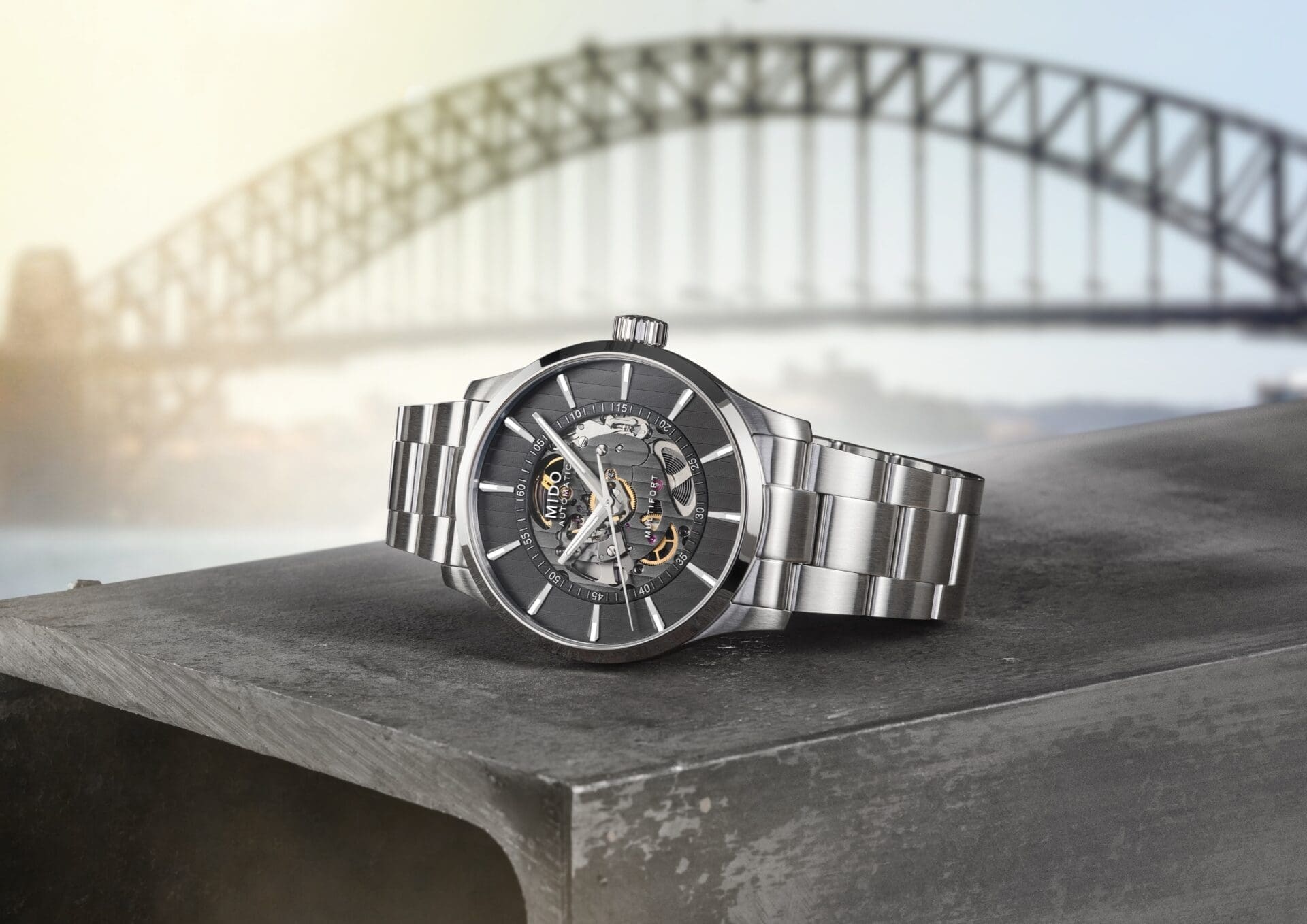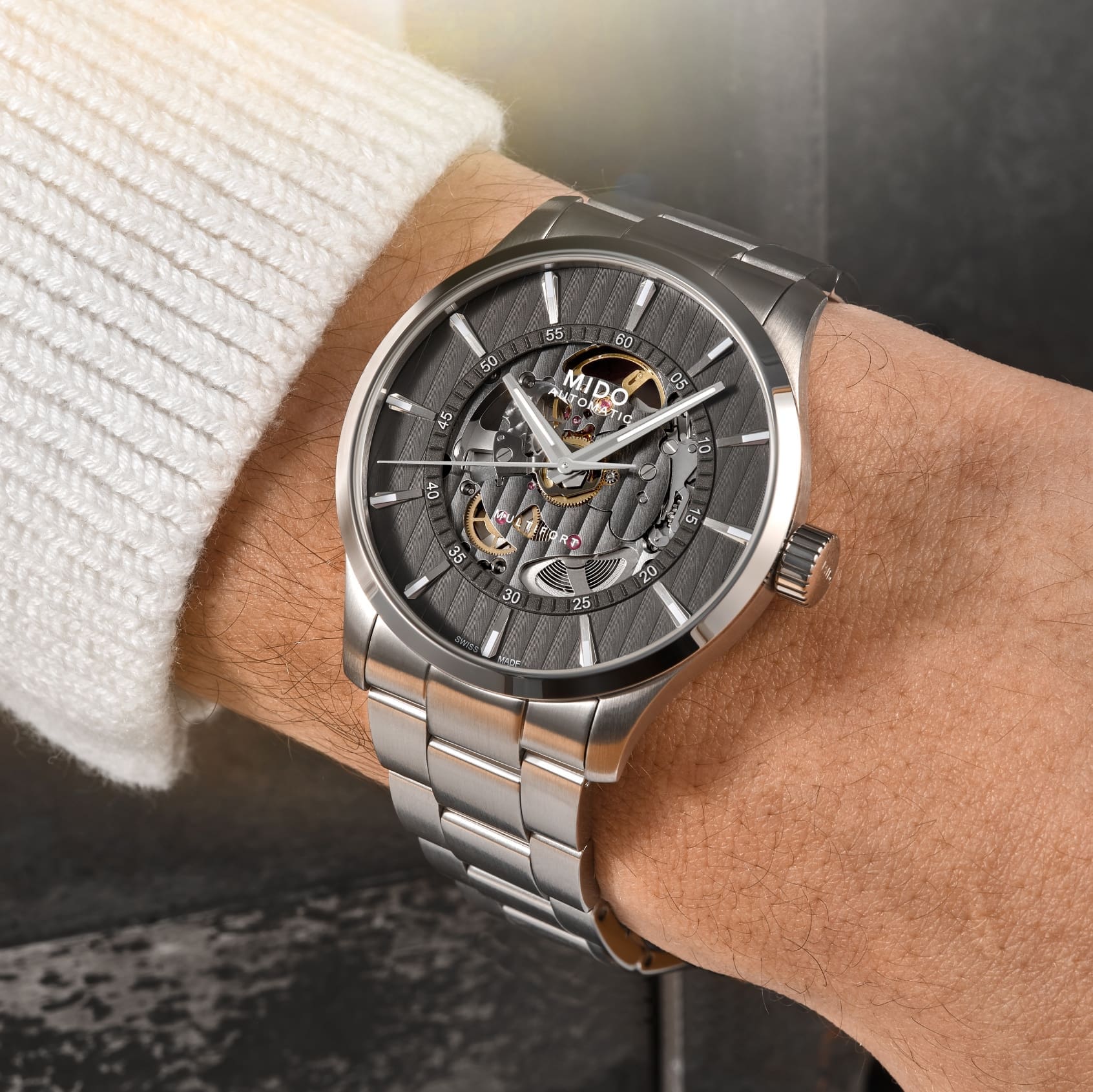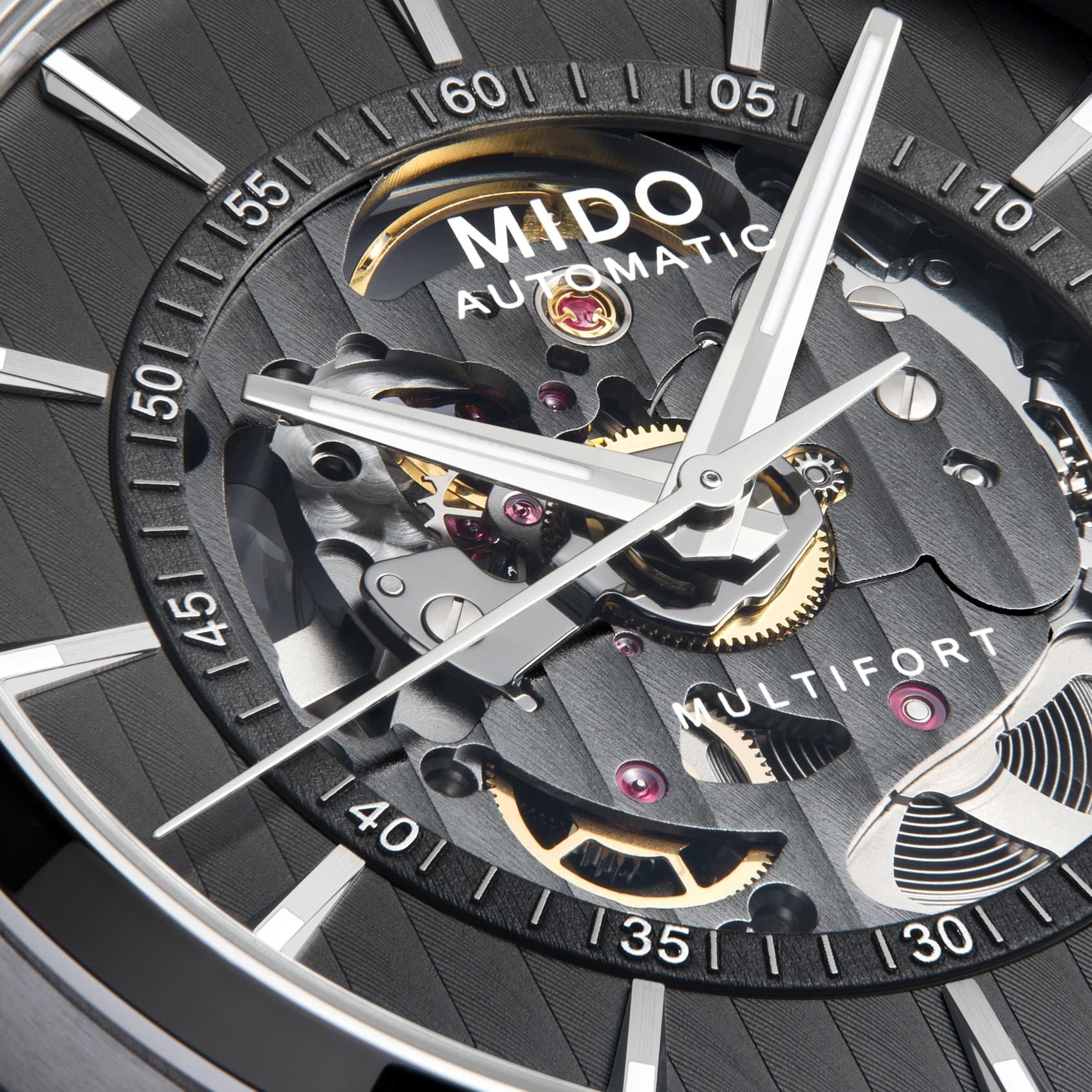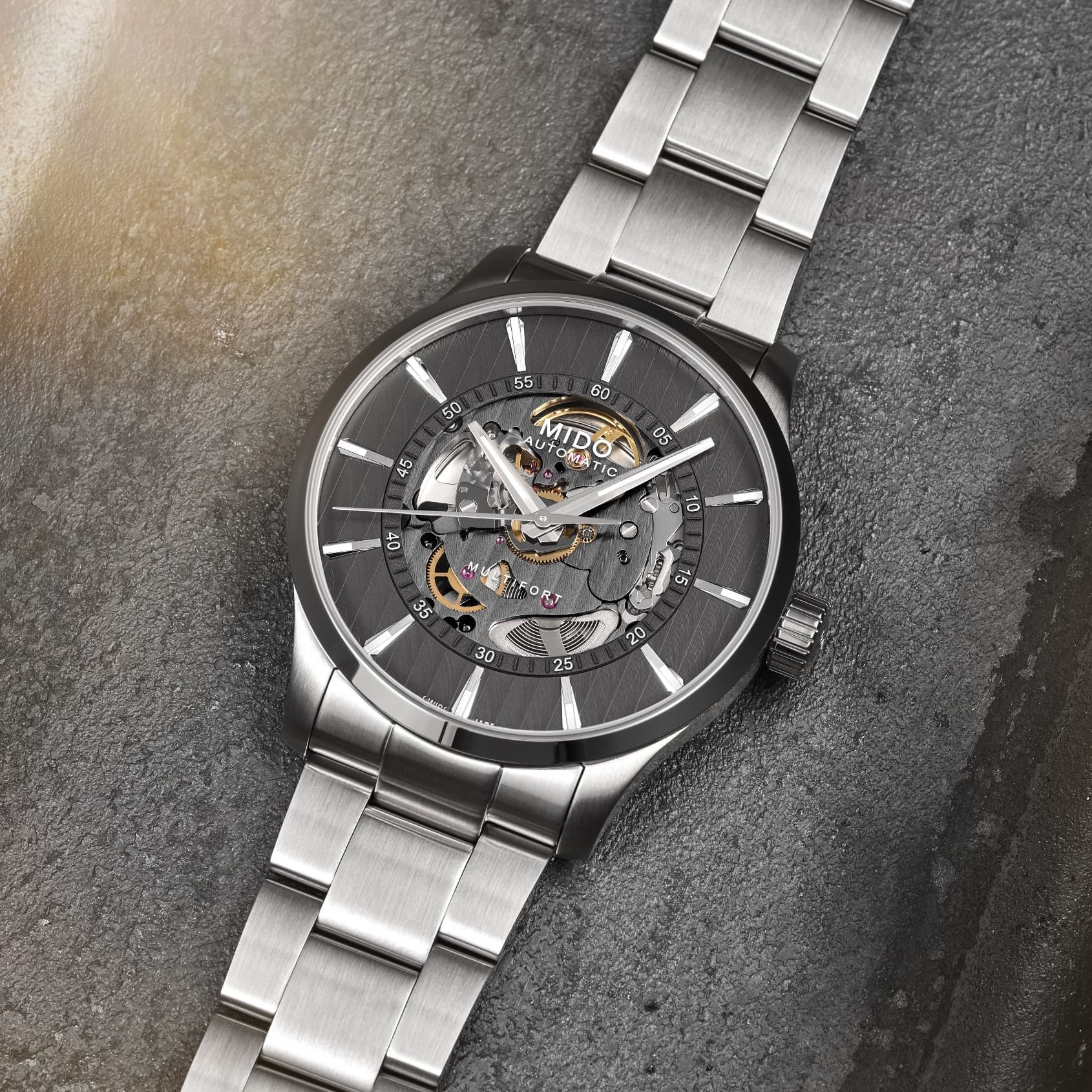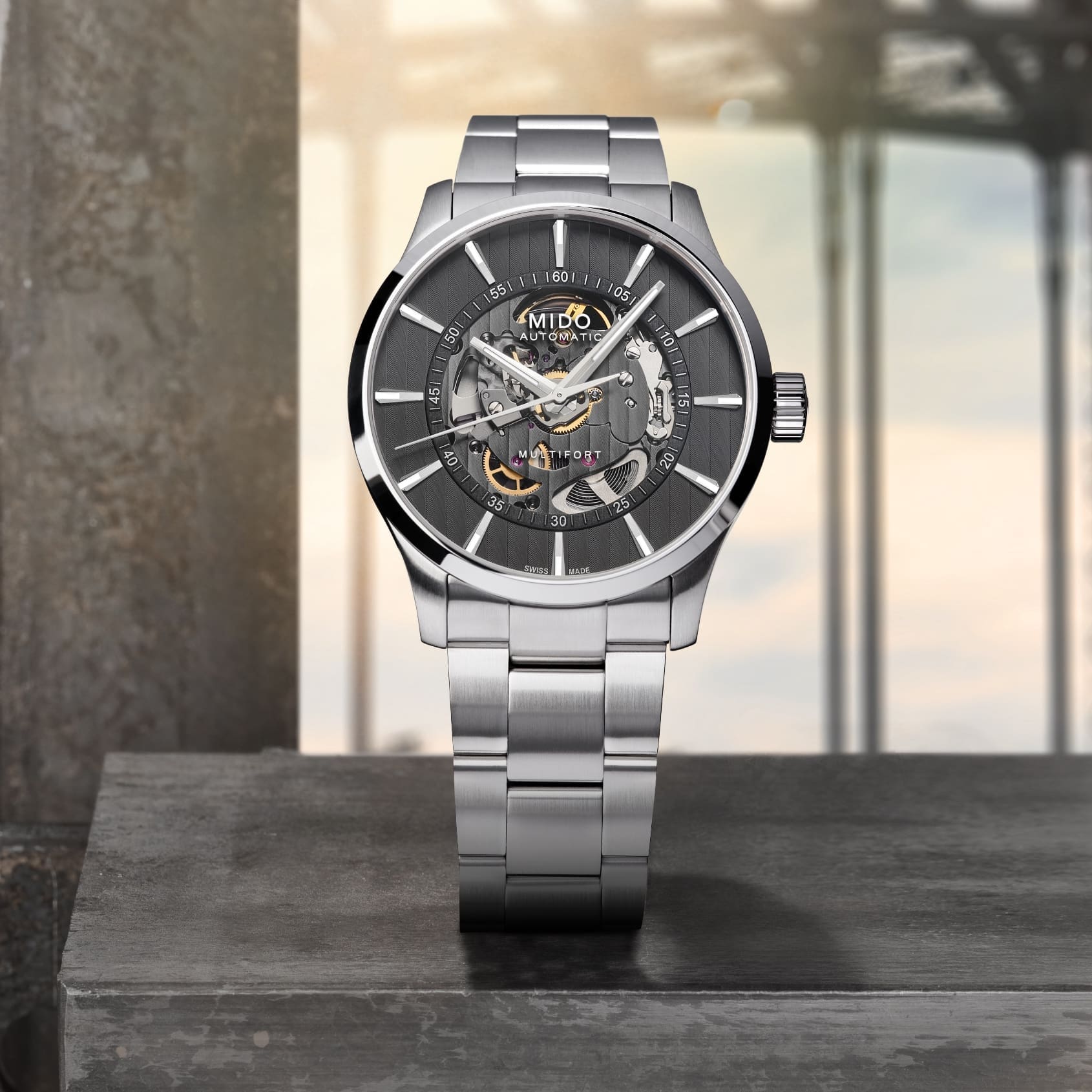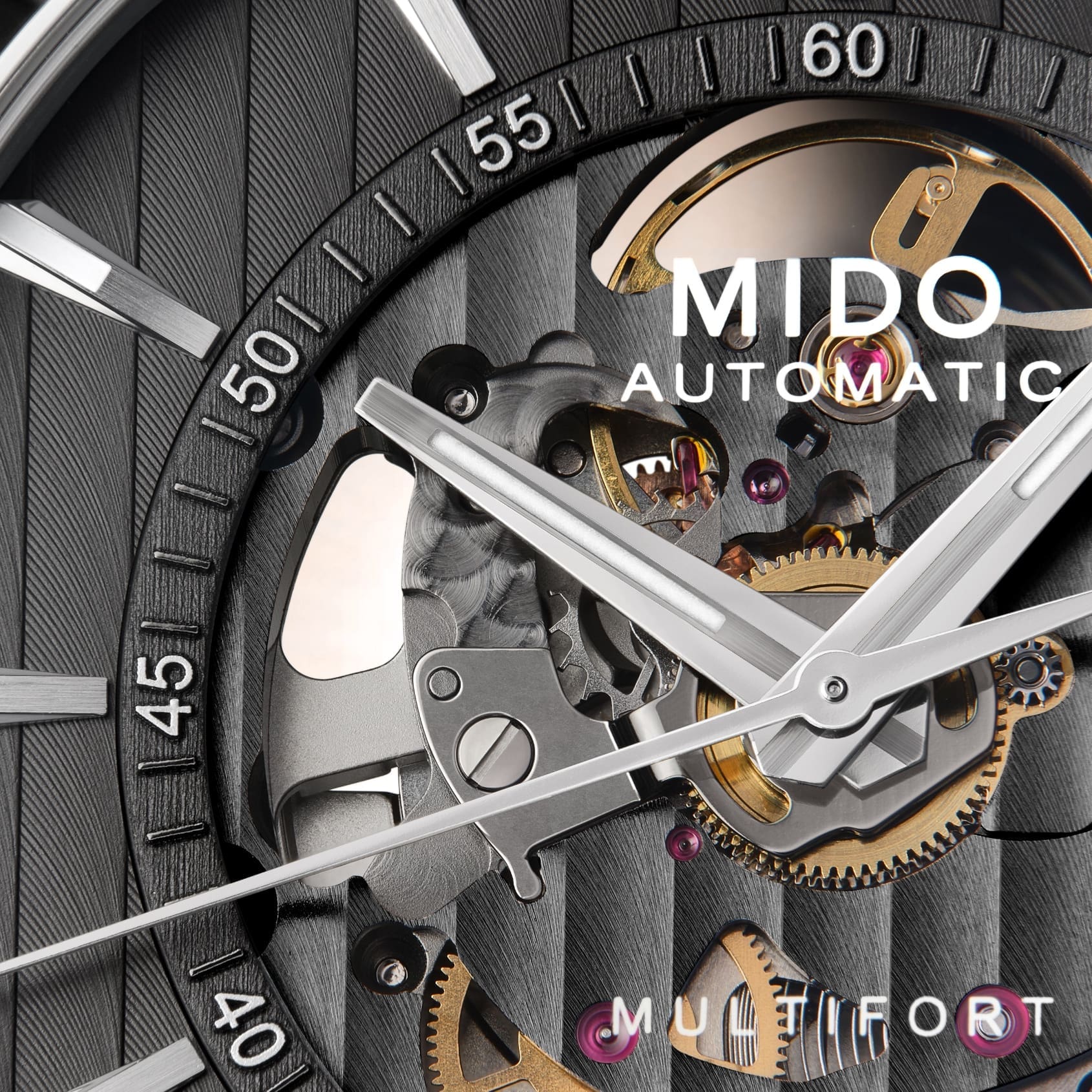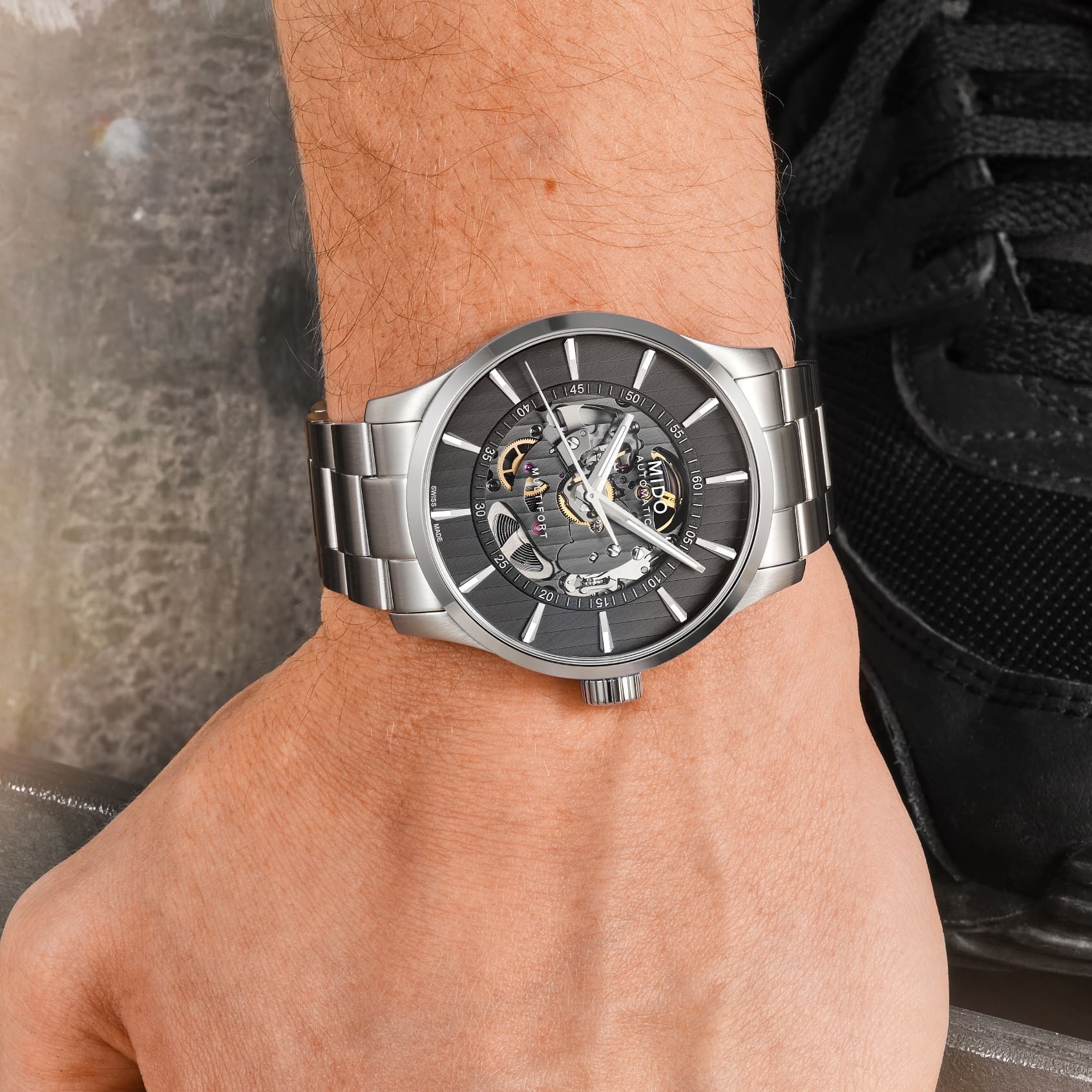INTRODUCING: The Mido Multifort Skeleton Vertigo is a strong value play inspired by a true Aussie icon
D.C. HannayWatch enthusiasts can be a quirky bunch. So fanatical is our passion, we sometimes forget that not everyone is like us. For every one of us, there are a thousand “normals”, perfectly happy strapping on their Apple Watch, Fitbit, or, perish the thought, nothing at all. Unless I’m in a fairly large metropolis, I can travel seemingly endless, tumbleweed-strewn frontiers without seeing anyone with an actual wristwatch. And God forbid I actually spot a wrist with an “in the know” timepiece attached…it’s all I can do to contain myself. I feel like SpongeBob giddily holding himself back from bursting into “The Best Day Ever”.
My family worries about me.
So when a NWP (Non-Watch Person) asks me what they should be looking for in a nice wristwatch, my horological evangelism kicks in. And one of the most effective recruiting tools can be a timepiece where the mechanical movement is visible from the dial side. Watching the tiny little machine on your wrist do its thing is a revelation into how this miniscule universe of gears, jewels, and springs actually works. A skeletonised dial provides hours of entertainment, and you’ll find yourself stealing glances at that exposed movement’s fascinating dance, perpetually in motion, powered by nothing more than your daily routine. And one very attractive skeleton watch (in both looks and price) is the new Mido Multifort Skeleton Vertigo. It’s a handsome all-rounder, easily dressed up or down, and available in a variety of finish options to suit your personal tastes.
The Mido Multifort line traces its roots all the way back to the 1930s, with the Multifort Skeleton Vertigo being the latest variation of that classic theme. It has a 42mm satin-brushed stainless case that, for most wrists, is neither too big nor too small. And lest a uniform satin finish subdue the proceedings too much, there’s a touch of bling courtesy of the polished bezel, to vary the ways in which the surfaces play with light. Wearers get a choice of unadorned stainless, or PVD finishes in either black or rose gold. Water resistance is a healthy 100 metres, aided by the screwdown crown, unusual for a non-dive watch. The caseback also screws down, and it’s a display back as well, so you can peep the movement from both sides. An antireflective sapphire crystal protects the deconstructed dial, which is this watch’s Big Story.
There’s a whole lot going on with the Vertigo’s dial, which is surprising, considering how legible the whole affair is. An unusual implementation of vertical Geneva striping on the dial itself adorns the outer edge, rendered in rhodium, anthracite, or black, depending on the case colour. Cool Aussie fun fact: The striping, not coincidentally, was inspired by the suspension cables of the Sydney Harbour Bridge (which also dates to the ‘30s). The three-sided hands are lit by Swiss Super-LumiNova, and mirror the shape of the faceted applied indices. The indices (also lumed) slope in toward the center of the dial, pointing to the central minute track, which is marked in relief. From that point inward, the movement is exposed, with the minimal Mido wordmark, ‘automatic’, and ‘Multifort’ floating above it on the crystal. It’s a cool look, and allows the mechanical magic to take the spotlight right in the centre of it all.
The Mido Caliber 80 is based on the ETA C07.631, and as the name implies, it’s good for a long weekend, at 80 hours of power reserve. The Swiss movement features some pretty lovely finishing on both sides, with Geneva stripes matching the dial on the front side, and echoed on the Mido-branded rotor around back. Besides the extended power reserve, the Caliber 80 sports 25 jewels, a rate of 21,600 vph, and a titanium-based Nivachron balance spring, which increases resistance to magnetism and shock. Just some of the benefits of having your own movement manufacture as part of your parent corporation (Both Mido and ETA are part of the Swatch Group).
The Vertigo comes on either a three-link Oyster-style bracelet (for the stainless models), or a brown leather (rose gold case) or fabric strap (black case). My favourite variant is probably the stainless model with anthracite dial on bracelet, but it would be nice to mix in the black fabric strap on occasion, just for the added pop from the orange double-row stitching. Perhaps Mido will make it available as an accessory. Both strap choices feature a folding clasp, similar to the bracelet.
The level of finishing throughout the entire Multifort Skeleton Vertigo lineup is pretty great, especially considering the asking price, but economies of scale definitely work in the consumer’s favor here. With the high level of visual interest, build quality, and the stellar performance of the in-house ETA-based movement, I’m declaring the Vertigo a strong value play (under $1,200 USD) for a versatile, all-around watch, and one that could hook a budding enthusiast for life.
The Mido Multifort Skeleton Vertigo pricing and availability:
The Multifort Skeleton Vertigo is available now for $1,625 AUD
| Case Material | Satin-finished stainless steel, rose gold PVD, or black PVD |
| Case Dimensions | 42mm |
| Water-Resistance | 100m |
| Dial | Skeletonised rhodium |
| Straps | Brushed stainless bracelet, brown leather (rose gold), or black fabric (black) |
| Movement | Automatic Mido Caliber 80 (ETA C07.631 base) |
| Power Reserve | 80 hours |
| Complications | Hours, minutes, seconds |
| Price | $1,625 AUD (stainless) |




